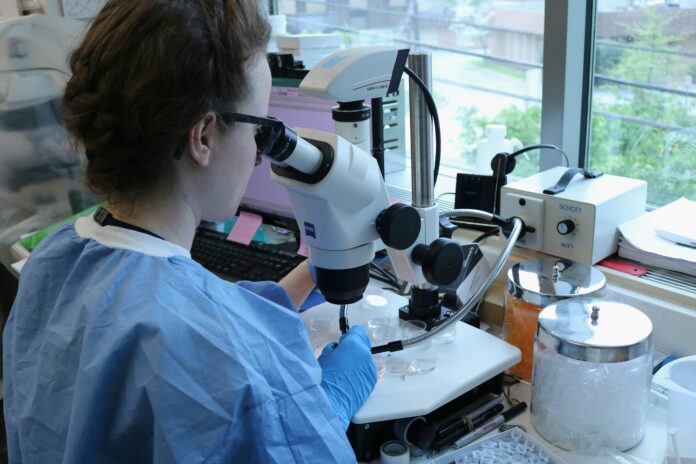A study by Imperial College London reveals a surge in food allergy diagnoses in England, highlighting alarming gaps in adrenaline pen usage
A new study conducted by Imperial College London has found that the number of food allergy diagnoses in England has more than doubled over the past decade. The research, which analyzed general practitioner (GP) records for 7 million people, discovered that new food allergy cases increased from 76 per 100,000 individuals in 2008 to 160 per 100,000 in 2018. The total prevalence of food allergies also rose during this period, growing from 0.4% to 1.1%.
Children under the age of five were particularly affected, with 4% of this age group diagnosed with food allergies in 2018. The prevalence decreased with age, with 2.4% of children aged 5-9, 2% of those aged 10-14, and 1.7% of 15-19-year-olds being affected. Among adults aged 20 or over, the prevalence was 0.7%.
Embed from Getty ImagesThe study also highlighted a concerning gap in care for those at risk of severe allergic reactions. One-third of individuals who had previously experienced anaphylaxis—a potentially life-threatening allergic reaction—did not carry adrenaline auto-injectors (AAIs), such as EpiPens, which are critical for emergency treatment. The study underscores the urgency of addressing food allergy diagnoses in England, revealing that many at-risk individuals are not adequately prepared for emergencies.
Dr Paul Turner, the lead researcher and professor of paediatric allergy at Imperial’s National Heart and Lung Institute, emphasized the need for better support for GPs and primary care staff in managing patients with food allergies. He noted the significant impact food allergies can have on lives, sometimes with fatal consequences.
The study did not delve into the reasons behind the rise in food allergy cases, but experts suggest multiple factors could be contributing, including increased awareness, outdated dietary advice for infants, and environmental factors like the use of detergents and creams that may compromise the skin barrier.
Imperial College researchers also pointed out disparities in access to life-saving treatment, with those in more deprived areas being less likely to receive prescriptions for AAIs. Only 55% of adults and 64% of children who had previously experienced anaphylaxis had AAI prescriptions.
The study also highlighted a concerning gap in care for those at risk of severe allergic reactions. One-third of individuals who had previously experienced anaphylaxis—a potentially life-threatening allergic reaction—did not carry adrenaline auto-injectors (AAIs), such as EpiPens, which are critical for emergency treatment. The study on food allergy diagnoses in England reveals that many at-risk individuals are not adequately prepared for emergencies, underscoring the urgency of improving care and awareness.
Analysis
Political: The findings could prompt calls for policy interventions to improve the management and treatment of food allergies in England. The disparities in AAI prescriptions, particularly among those in deprived areas, may lead to discussions on healthcare equity and the need for targeted public health initiatives to ensure that all individuals at risk have access to life-saving medication.
Social: The doubling of food allergy diagnoses highlights a growing public health concern that affects a significant portion of the population, especially young children. The study conducted in England on food allergy diagnoses may raise awareness about the importance of early diagnosis and proper management of food allergies, as well as the need for increased education and support for individuals and families dealing with these conditions.
Racial: While the study does not directly address racial disparities, the socioeconomic disparities highlighted in the research suggest that certain racial and ethnic groups, who may be overrepresented in deprived areas, could be disproportionately affected by limited access to AAI prescriptions. This could lead to further investigation into racial disparities in food allergy management and outcomes.
Gender: The study does not provide specific data on gender differences in food allergy prevalence or management, but future research could explore whether gender plays a role in access to care and treatment outcomes for individuals with food allergies.
Economic: The increasing prevalence of food allergies and the associated need for emergency treatment devices like AAIs could have economic implications, including increased healthcare costs and potential impacts on public health resources. The disparities in access to AAIs in deprived areas also underscore the importance of addressing economic inequalities in healthcare access and outcomes.
